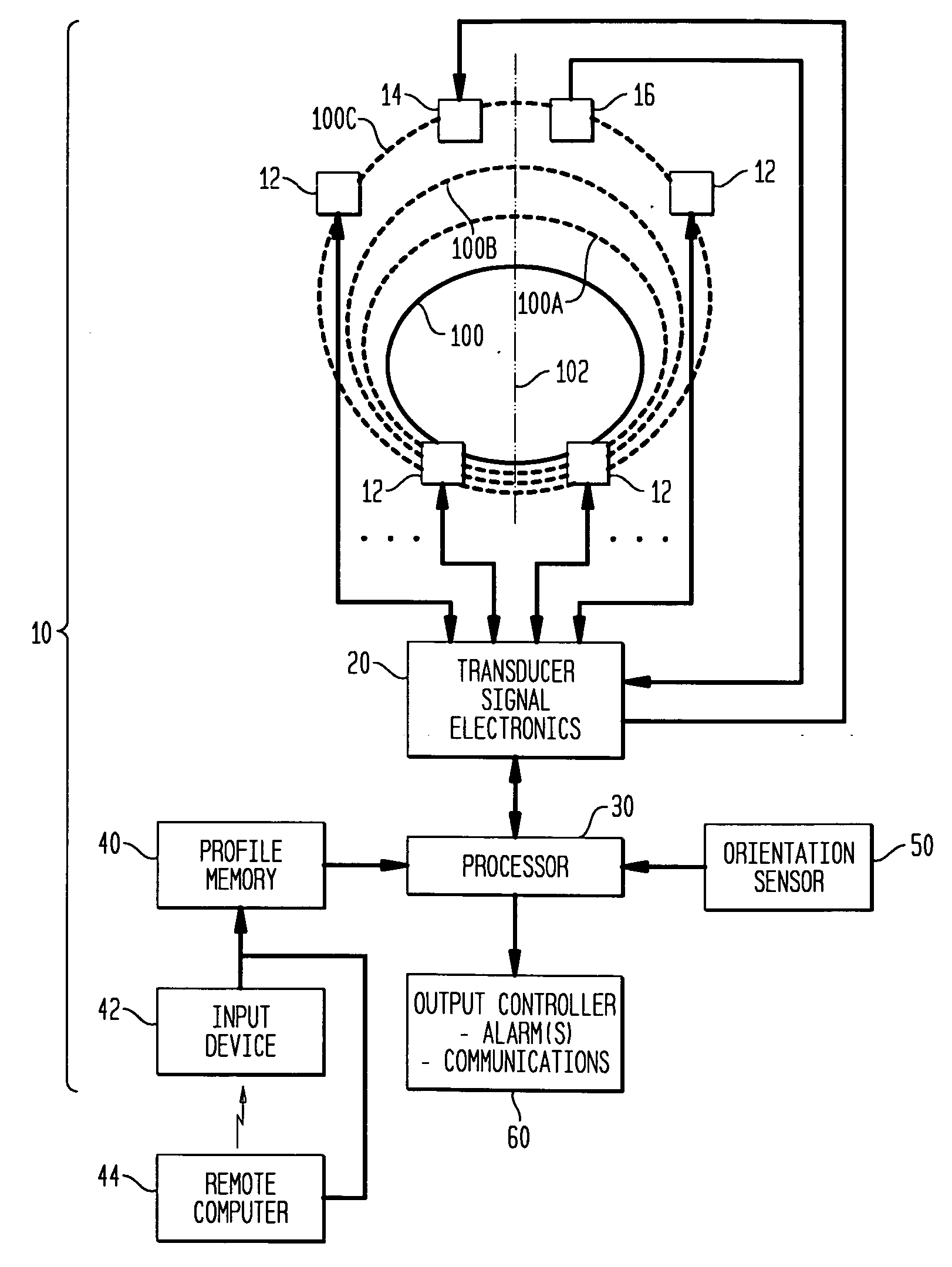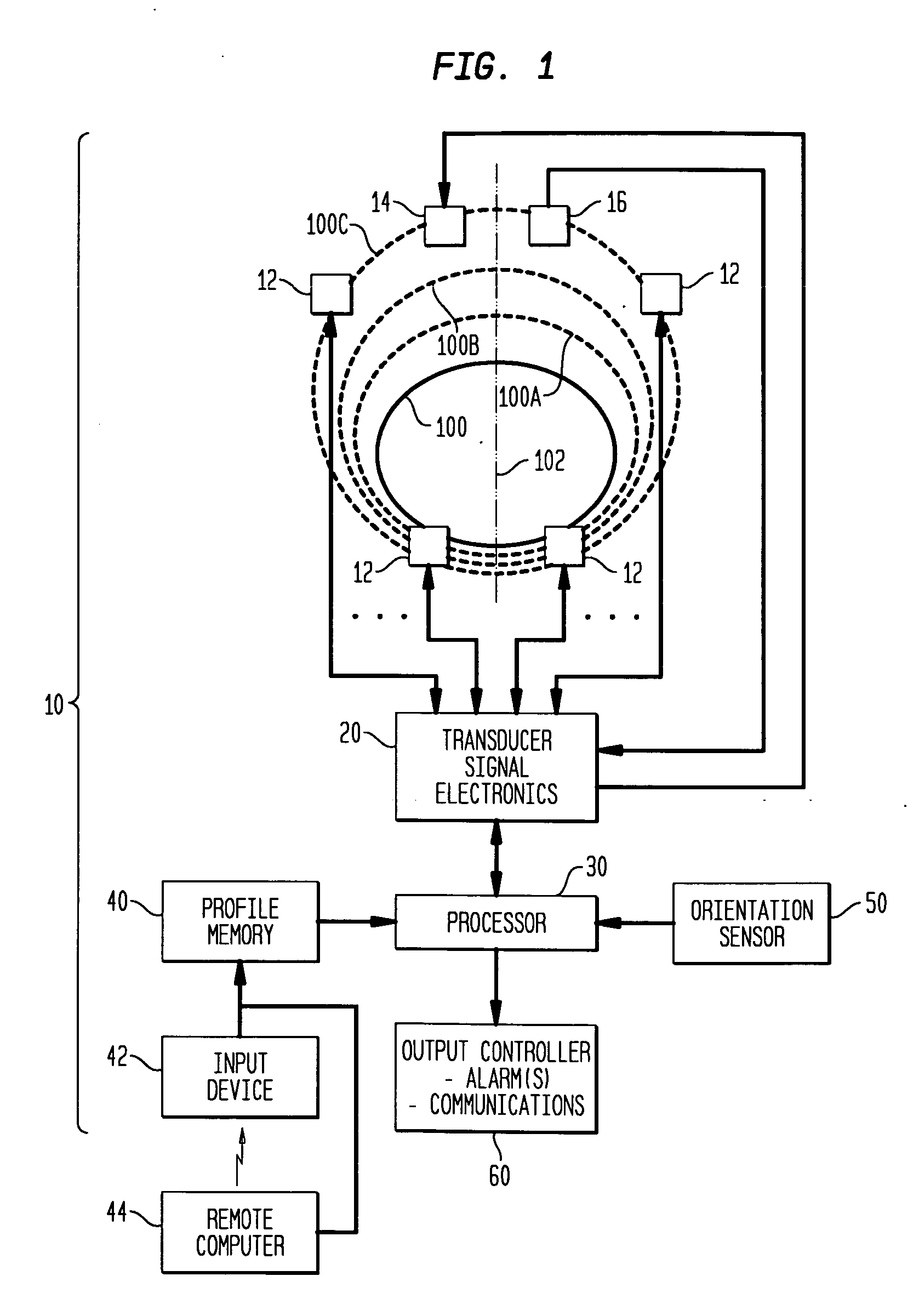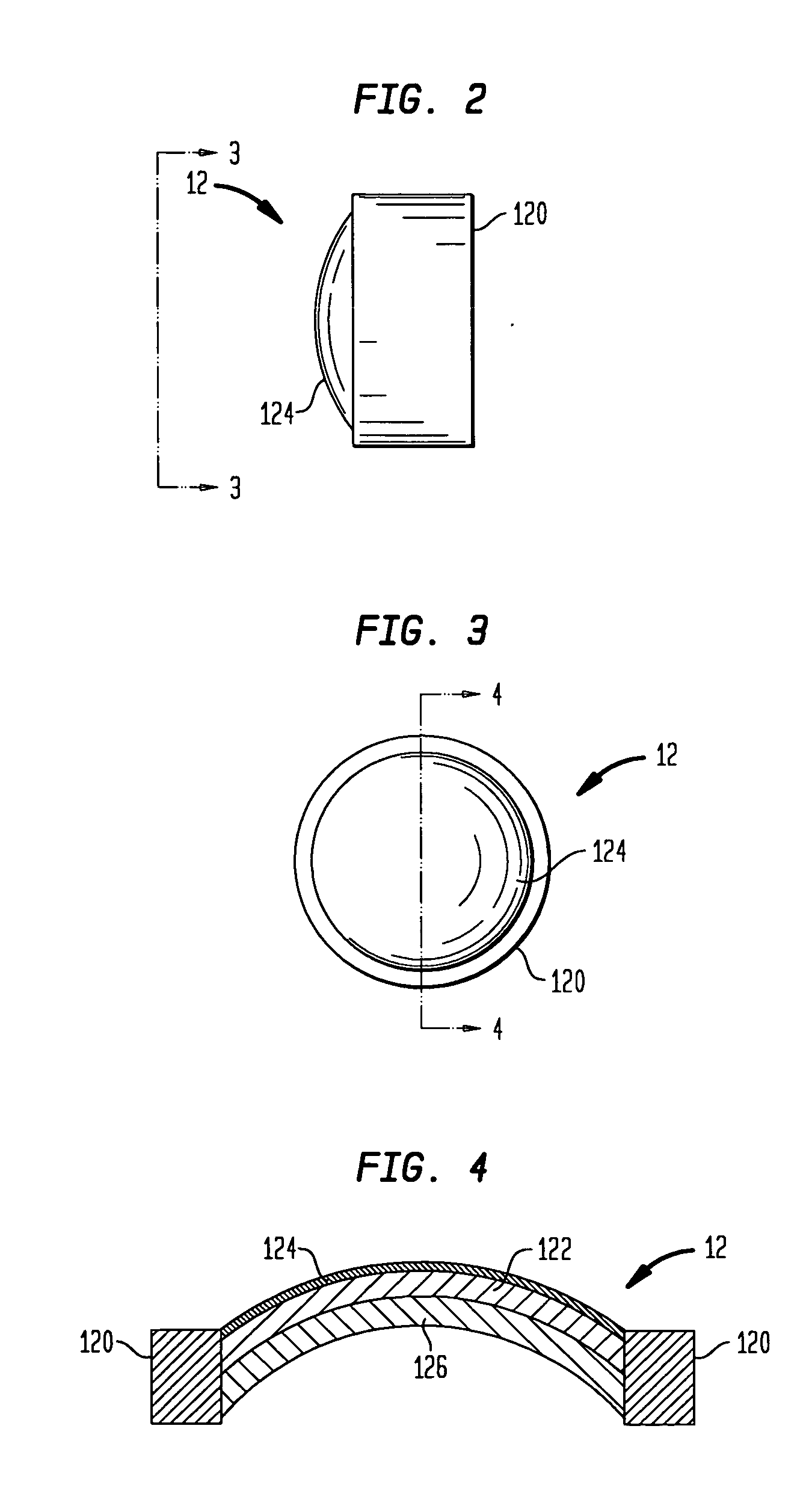System and method for monitoring bladder distention in a variety of patients having differing anatomical proportions
a technology of anatomical proportion and monitoring system, applied in the field of bladder monitoring system and method, can solve the problems of conventional bladder monitors not serving, urinary incontinence, and inconvenient use,
- Summary
- Abstract
- Description
- Claims
- Application Information
AI Technical Summary
Benefits of technology
Problems solved by technology
Method used
Image
Examples
Embodiment Construction
[0017]Referring now to the drawings and more particularly to FIG. 1, a bladder distention monitoring system in accordance with an embodiment of the present invention is shown and is referenced generally by numeral 10. System 10 is a non-invasive bladder monitor useful for the management of urinary incontinence (UI) problems. As will be explained herein, system 10 (as well as other embodiments of the present invention) address the issue of the wide physiological and anatomical variability in the target population suffering with UI. The present invention can be customized to the needs and situation of the individual patient.
[0018]To illustrate the scale of the problem to be addressed, urodynamic studies indicate that bladder size is highly variable between individuals, ranging from under 100 cubic centimeters to over 1500 cubic centimeters. There are also differences in the shape of the bladder, both in the non-distended and the distended state, and in the elevation relative to a pati...
PUM
 Login to View More
Login to View More Abstract
Description
Claims
Application Information
 Login to View More
Login to View More - R&D
- Intellectual Property
- Life Sciences
- Materials
- Tech Scout
- Unparalleled Data Quality
- Higher Quality Content
- 60% Fewer Hallucinations
Browse by: Latest US Patents, China's latest patents, Technical Efficacy Thesaurus, Application Domain, Technology Topic, Popular Technical Reports.
© 2025 PatSnap. All rights reserved.Legal|Privacy policy|Modern Slavery Act Transparency Statement|Sitemap|About US| Contact US: help@patsnap.com



